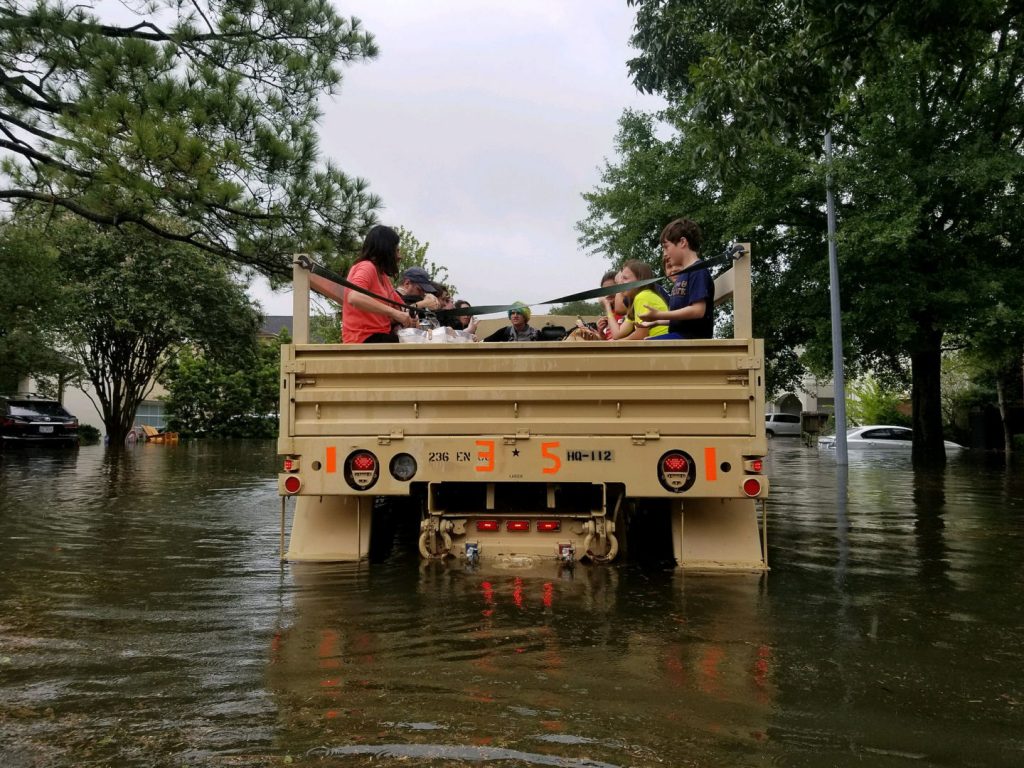Welcome to our week in review of news and stories about Harvey recovery and flooding issues you may have missed over the last few days. If you weren’t able to check out last week’s edition, you can find it here. Feel free to share any links we may have missed in the comments. On to the news.
Reads of the week
What bond investors weren’t told about a threat facing Cinco Ranch (Houston Chronicle): Ten municipal utility districts (MUDs) in the Cinco Ranch area have had over 70 bonds sold since 1992 and only one of those disclosed a flooding risk to those neighborhoods.
Harvey was three months ago. These displaced families are still in limbo (Texas Tribune): A pair of Houston families grapple with the same decisions and problems that many thousands in our area are going through a few months after Harvey.
Houston housing
Harris County proposing dramatic overhaul of floodplain regulations (Houston Chronicle): Harris County (not Houston, for now) may require developers to use the 500-year floodplain for new development, as opposed to the 100-year floodplain as it is now.
A House’s Flood History Can Be Hard To Find (Houston Public Media): Trying to find out if a home you’re considering buying or renting has flooded is often pretty difficult to do.
Rental market tightens, but it may not last (Houston Chronicle): Houston’s apartment occupancy has experienced a heck of a reversal over the last few months. More volatility may be in the future.
How Much Damage Did Harvey Do To Texas Homes? There May Never Be An Exact Answer (Texas Tribune): With a substantial amount of money coming in and numerous government agencies involved in the recovery effort, some things may fall through the cracks when assessing the scale of the disaster, concerning advocates.

Displaced by storm still yearn for home (Houston Chronicle): 47,000 flood victims are still displaced in hotels all over the country. The housing aspect of the recovery usually moves slowly, and in a post-Harvey world, it’s no different.
Clean-up and recovery
After 3 months, removal of Harvey debris nears end (Houston Chronicle): Over 3 million cubic yards of debris has been collected from in front of flood damaged homes since Harvey. Thankfully, that part of the clean up effort is nearing the finish line.
On Texas coast, Harvey-battered residents find recovery a slog (Austin American-Statesman): The recovery in the Coastal Bend and near Rockport is progressing, but at a painfully slow pace.
Post-Harvey Immigrant Workers Report Rampant Wage Theft (Houston Public Media): Over 25% of day laborers working on Harvey recovery efforts in Houston have reported wage theft, and they are afraid report it to authorities.
Holiday season starts with Houstonians still supporting each other (Houston Chronicle): As usual, Houstonians helping Houstonians, this time on Thanksgiving.
Pennsylvania synagogue sends a stunning gift to Texas flood victims (Houston Chronicle): Members of a Philadelphia area synagogue sent $18,000 worth of new items to be distributed to familes served by Child Protective Services.
Miscellaneous news and notes
Port Arthur plant had largest wastewater spill in Texas after Harvey (Houston Chronicle): State records show that the largest wastewater release during Harvey occurred in Port Arthur, but areas around Houston also had issues.
Can Trump nudge Texas to dip into its rainy day fund? (E&E News): The Texas rainy day fund may be partially at issue when considering the lower than expected disaster relief proposal by the White House.
TEXAS DAM SAFETY: Statesman investigation prompts review by lawmakers (Austin American-Statesman): Central Texas is known as Flash Flood Alley for a reason. A lot of work has been done to mitigate flood damage in that region, much of it successful. But some dam regulations likely need to be revisited in Texas in our post-Harvey world.
How Tulsa Became A Model For Preventing Floods (NPR): Houston may consider looking to our north at how Tulsa has handled flooding problems for some inspiration going forward.
Harris County works to build up volunteer rescue force (Houston Chronicle): In many disasters, it’s often neighbors and volunteers who are the first line of response for those needing help. A Houston area Volunteer Disaster Response team could help government officials expedite their response to a disaster.
If you have any information on where all the donations have gone, that would be good to know. Having suffered a loss and not been able to get assistance, knowing how much has been collected, I’d like to know whose pocket it’s in. I’m also hesitant to make donations to any organizations in the future.
Really more curious on what any new flood infrastructure will look like. There has been mumblings about a “C” reservoir but thats it. Any news on improvements on Addicks/Barker?
This is an ongoing good read for the locals and others who face similar circumstances. On my Monday follow up list.
Eric, you tweeted today that in 9-10 days, we will experience a flip from autumn to winter. How bad will the storms be that come through our area? Is there a risk of Harvey-like conditions along with abundant tornadoes?
One of our Facebook commenters shared a link we missed this week about how the research community will be tracking Houston’s post-flood environment for awhile in the wake of Harvey. https://www.houstonpublicmedia.org/articles/news/energy-environment/2017/11/26/252551/as-houston-moves-on-from-harvey-scientists-dig-in-for-the-long-haul/